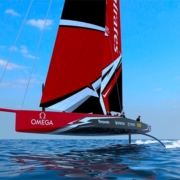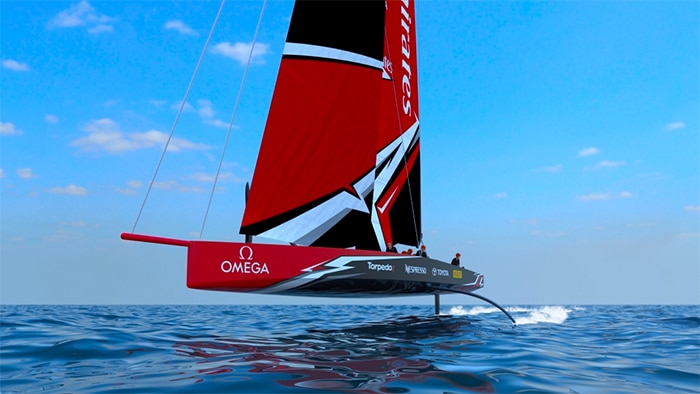Sailboat Design
Surely, the first sailboat was invented by a five-year-old child with a block of wood. He or she stuck a twig through a piece of animal skin and then down into a knothole in the wood. A fascinated father sat by amused at the child’s ingenuity. The distracted father was then eaten by a saber-toothed tiger and sailboats were not thought of for another 10,000 years. Perhaps!
As humans, we just can’t stop wondering what is over the horizon and it was sailboats that first quenched that thirst when a large body of water was encountered. The same yearning you feel for harnessing the wind and travel was felt by the Phoenicians, the Egyptians, and the Chinese, thousands of years ago. Paddles were all fine and dandy but that took energy from manpower and consumed lots of food. Wind is a free and abundant source of energy—what was needed however was to develop the skill to harness it.
Over history, the design of boats and sails has evolved empirically. Small improvements were made century by century. Today, we use computers to design for hull strength and slipperiness through the water (yes, slipperiness is a technical term in sailing). We use finite element analysis computer models to optimize compressible wind flow around sails and vertical standing wing sails. Composite materials are purpose-designed for optimal directional strength and lightweight. We pop boats out of the water on hydrofoils to make them s go at speeds in excess of 50 knots. Hundreds of millions of dollars are invested in America’s Cup boats that push the envelope of sailing technology. The latest America’s Cup boats don’t even have a keel. Just one hydrofoil on an arm and one hydrofoil on the rudder. It’s true Formula One-type racing and very exciting stuff!
Mostly gone however is the use of sailboats for commercial trade. Today, most sailboats are designed for day cruising, sailing vacations, racing, or to satisfy the yearning for the blue horizon.
Regardless of its use, however, there are several features common to most sailboats. They are:
- Keel. The weight and location of a vessel’s keel keep the vessel from tipping over and helps stabilize forward motion. While the keel is vital to a regular type sailboat, we infrequently see it, usually only when the sailboat is heeled over in strong winds or hauled out for maintenance.
- Hull. This is perhaps the most important feature of a sailboat. When all else is lost: rigging, rudder, engine, sails—an intact hull will save your life.
- Rigging, standing, and running. The rigging, standing, and running consists of all the devices needed to control the sails.
- Sails. Sails are beautifully and cleverly designed synthetic materials that grab and control the wind.
- Foil. Not common – an underwater lifting blade acting to raise the hull from the water.
To maximize sailboat efficiency and stay within production cost limits, boat designers cleverly integrate these components. The result has been an incredible evolution due to creative ideas, new construction materials, and better science
Some common parts of the boat at the stern are shown here.








